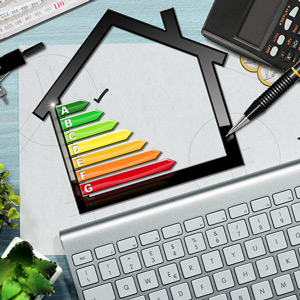
Many fenestration manufacturers now offer residential windows, sliding glass doors, skylights and tubular daylighting devices (TDDs) that meet new, more rigorous U.S. ENERGY STAR 7.0 specifications. Led by the U.S. Environmental Protection Agency (EPA), the more stringent residential ENERGY STAR 7.0 program goes into effect October 23, 2023. View the U.S. ENERGY STAR 7.0 specifications for windows, doors and skylights.
Fenestration manufacturers seeking to have residential products certified to ENERGY STAR 7.0 will have to meet additional new requirements to comply with the new program, compared with earlier versions. For example, to meet 7.0 requirements, residential fenestration manufacturers must now provide proof that air leakage (AL) reports are less than 10 years old.
To meet proof of air leakage compliance for U.S. ENERGY STAR 7.0:
- If the manufacturer uses a North American Fenestration Standard (NAFS) certificate designation (for example, FGIA/AAMA/ALI: Authorization for Product Certification) on their label for air leakage compliance, then a current NAFS certificate and a less than 10-year-old air leakage test report should be submitted (uploaded) to the FenStar site.
- If the manufacturer labels their product for AL using only the National Fenestration Rating Council (NFRC) temporary label, then a less than 10-year-old AL test report should be submitted (uploaded) to the FenStar site.
In addition, manufacturers who wish to participate in the U.S. ENERGY STAR 7.0 program will also need to provide:
– An example of these labels for the product line (ENERGY STAR, NFRC and permanent) – several formats are accepted.
– Installation instructions applicable to the product line.
NFRC FenStar staff indicates they will continue to request the full air leakage test report from U.S. ENERGY STAR 7.0 participating manufacturer partners. If the full report cannot be provided, NFRC staff says the following minimum information must be provided through a partial test report submission AND the submission of the structural certificate:
- Test date
- Test report number corresponding to the structural certificate
- Model name corresponding to the NFRC Certified Products Directory (CPD) model name.
For more details on NFRC requirements for U.S. ENERGY STAR compliance, view FenStar resources. Email questions on NFRC requirements for U.S. ENERGY STAR compliance to NFRC staff at [email protected].
FGIA and the Window and Door Manufacturers Association (WDMA) will co-host a webinar early in 2024 to help U.S. ENERGY STAR partner manufacturers understand how to submit unit shipment data electronically for 2023 sales. Those annual unit shipment reports of U.S. 2023 ENERGY STAR-certified products will be due by March 1, 2024, and may either be submitted by FGIA and/or WDMA manufacturers through the association portal, or to EPA’s data vendor. Watch for more details on that webinar in the future.
The EPA has also released criteria for the 2024 U.S. ENERGY STAR Most Efficient program, which designates the most energy efficient products within various categories. View 2024 ENERGY STAR Most Efficient specifications for residential skylights and tubular daylighting devices (TDDs). Read the 2024 U.S. ENERGY STAR Most Efficient criteria for residential windows and sliding glass doors.
It’s important to note and to make sure that consumers understand that in 2023 through 2032, only ENERGY STAR Most Efficient windows, skylights and TDDs qualify for U.S. tax credits, rather than the base ENERGY STAR units. Products must be purchased and installed in the primary residence of Americans between January 1, 2023, and December 31, 2032, to qualify for a given calendar year’s tax credits in that tax filing year. Tax credits only apply to the product cost and do not apply to installation costs. Learn more about U.S. tax credits for ENERGY STAR Most Efficient windows, skylights and TDDs.
The U.S. ENERGY STAR program is designed to be a voluntary, above model code program to help drive greater energy savings by encouraging American consumers to purchase energy-efficient products that have earned the ENERGY STAR.



